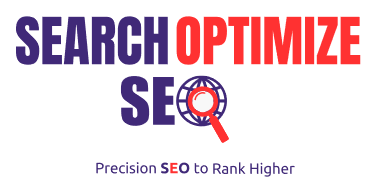SEO in Australia has entered a new era. Traditional tactics—keywords, backlinks, and link‑bait blogs—are no longer enough. The key to visibility now lies in mastering Answer Engine Optimization (AEO) and Generative Engine Optimization (GEO)—optimization for AI‑powered search interfaces, conversational assistants, and generative engines. Combined with hyperlocal tactics, mobile experience, and content credibility (E‑E‑A‑T), these trends define success in 2025. Australian enterprises and agencies must understand and integrate these shifts to stay relevant and competitive.
1. Generative Engine Optimization (GEO): Be What AI Answers With 🧠
What it is: GEO (also known as AI SEO or LLM optimization) optimizes content so generative AI tools—like ChatGPT, Google’s AI Overviews, and others—select and cite your pages. GEO targets AI engine behavior rather than classic organic ranking.
Why it matters in Australia: With AI‑powered tools growing locally, Australian brands must appear in direct answer boxes and conversational replies.
How to apply it:
- Use structured formats (e.g. FAQs, bullet point answers) that AI can extract easily.
- Employ AI‑specific metadata files like
llms.txtand AI‑preferred schema (Q&A, HowTo). - Frame content with clear answers to common user questions.
- Maintain authority signals: expert bios, references, and credible outbound links.

2. AEO – Answer Engine Optimization: Mastering Conversational Search
Definition: AEO is a strategy focused on crafting content that delivers concise, accurate answers for AI chatbots and generative search responses—beyond traditional keyword focus.
Why it matters for Australian SEO: As more Australian users query via voice assistants and chat interfaces, being the answer behind the AI is more valuable than ranking #1 in traditional search.
Tactics for AEO success:
- Build clusters of related questions (topic cluster model) to capture intent.
- Structure content for easy natural language extraction.
- Diversify content formats: concise Q&A sections, short explanatory paragraphs, bullet lists.
3. Local & Hyper‑Local SEO: Capture Australian “Near Me” Traffic
Australia continues to lean heavily on local search behaviors. Up to 46% of all searches have local intent, and complete Google Business Profiles generate significantly more clicks than incomplete ones.
Core trends:
- Local AI automation: AI tools generate hyper-local content and provide localized insights.
- Neighborhood focus: Micro‑location targeting—creating pages for suburbs or service areas—wins block-by-block relevance.
Recommendations:
- Optimize your Google Business Profile with current details, photos, and reviews.
- Create suburb-specific landing pages, add local schema markup, and collect customer reviews.
- Use review sentiment analysis to identify areas for improvement or new content ideas.
4. Voice & Visual Search Optimization
Australians are increasingly using voice assistants and visual search tools like Google Lens and Pinterest.
Voice Search:
- Structure your content to answer voice‑style questions naturally.
- Use long‑tail phrasing and include conversational keywords.
- Add FAQ sections for specific services or products.
Visual Search:
- Tag images with descriptive filenames, alt‑text, and structured data.
- Use VideoObject schema and optimize video titles/descriptions to appear in search.
5. User Experience & Core Web Vitals
Google continues to emphasize UX as a major ranking factor. Core Web Vitals—loading speed, interactivity, and visual stability—are essential.

Australian relevance:
- Mobile traffic dominates, making mobile-first optimization crucial.
- Poor UX can significantly hurt rankings, especially on competitive terms.
What to do:
- Use tools like PageSpeed Insights or GTMetrix to monitor performance.
- Optimize images, reduce unnecessary scripts, use lazy-loading, and enable browser caching.
- Ensure accessible design and improve navigation across all devices.
6. E‑E‑A‑T & Credibility in the AI Era
Audience trust is directly tied to SEO performance. Google emphasizes Experience, Expertise, Authoritativeness, and Trustworthiness (E‑E‑A‑T) to filter content that is helpful and safe.
How to demonstrate E‑E‑A‑T:
- Publish author bios listing credentials, experience, and qualifications.
- Showcase case studies, client reviews, testimonials, and media features.
- Cite reliable sources and provide in-depth, original content.
7. AI-Powered Content & Ethical SEO
AI tools like Jasper, Surfer, and ChatGPT have become mainstream for content production. However, quality and originality are key to SEO success.
Key considerations:
- Use AI to speed up drafts and research, but edit for human tone and local relevance.
- Avoid thin or low-quality AI-generated content; it can be flagged and de-ranked.
- Maintain transparency and ethical standards—no link schemes or keyword stuffing.
8. Emergent SEO Signals & New Terminology
SEO in 2025 is evolving into new paradigms. These emerging terms reflect how algorithms are adapting:
| Term | Meaning | Relevance |
|---|---|---|
| Entity‑First Indexing | Google prioritizes entities (e.g. brands, people, locations) over raw keywords | Mention Australian businesses, suburbs, and services |
| Attention SEO | Content performance is judged by engagement and dwell time | Use polls, videos, rich media |
| Content Velocity | Publishing frequently helps capture trends | Share timely insights on tax, travel, weather, etc. |
| Sentiment‑Driven SEO | Tone and emotional impact affect trust signals | Respond to reviews thoughtfully |
| Topical Depth | Detailed pages outperform shallow ones | Invest in long-form how-tos and guides |
| Programmatic SEO | Automate FAQ and answer generation | Helps feed AI with structured content |
9. Why a .au Domain Still Matters
In Australia, the .com.au or .au domain extension still holds value—building trust and relevancy.
Why it’s important:
- Australians are more likely to click and trust a
.auwebsite. - Google uses ccTLDs as a signal of geographic relevance.
- A
.audomain boosts conversion rates and SEO for local queries.
Best practices:
- Use .com.au for Australia-specific services.
- Ensure content, language, and CTAs are tailored for Australian audiences.
10. Omnichannel SEO: Beyond Just Google
Search is no longer limited to Google. People now search within TikTok, Instagram, ChatGPT, YouTube, Amazon, and even app stores.
What omnichannel SEO means:
- Optimize across all platforms, not just websites.
- Repurpose content into reels, shorts, pins, and tweets.
- Use platform-native SEO tactics—hashtags, tags, alt text, keywords in social captions.
Australian opportunity: Local businesses that adapt early to omnichannel search will build stronger visibility, particularly with younger and mobile-first audiences.
Conclusion & Action Plan
How to stay ahead in 2025:
- Audit your content for answer-readiness and structured formatting.
- Double down on local SEO with suburb-specific pages and optimized GBP.
- Focus on user experience—speed, mobile, and accessibility.
- Publish expert-led, in-depth content that builds trust and authority.
- Experiment with AI and voice-optimized content using ethical guidelines.
- Track AI search interfaces and optimize for AI-generated snippets and summaries.
Sample GEO / AEO Content Format
FAQ: How long does it take to register an ABN in Australia?
Answer: Registering an ABN typically takes 1–28 days, depending on verification. Most applications submitted with correct documentation are approved within 24 hours.
Steps:
- Gather identity documents.
- Apply through the Australian Business Register.
- Submit documents and verify identity.
- Track progress via ABN Lookup.
Tip: Always include your full legal name and local address for faster verification.
Final Thoughts
The Australian SEO landscape is evolving quickly. With AI driving new formats and expectations, it’s no longer enough to rank—businesses must become the trusted source AI recommends. By focusing on generative optimization, local SEO, mobile UX, and ethical content creation, Australian brands can thrive in the age of intelligent search.



